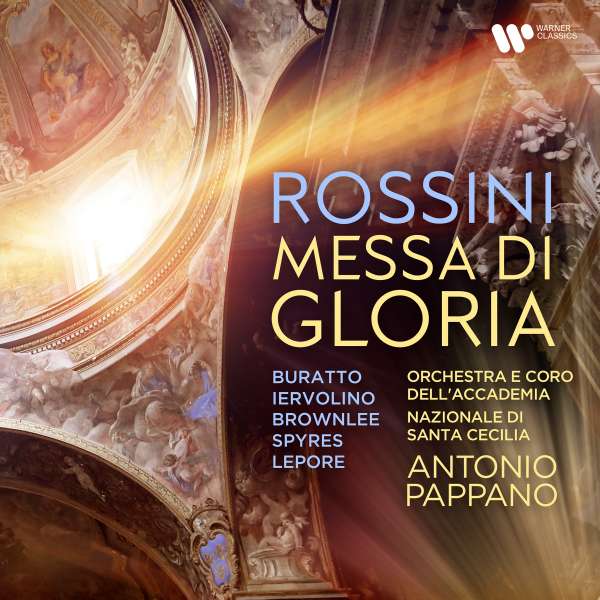Rossini komponierte seine Messa di Gloria für die Arciconfraternita di San Luigi in Neapel als er Musikdirektor des Teatro di San Carlo war. Sie hat die traditionelle Form einer Gloria-Messe, d.h. ohne Credo, Sanctus und Agnus Dei.
Dennoch hat sie wenig mit den Gloria-Messen anderer Komponisten zu tun, denn sie ist mit einem ungemein einfallsreichen Orchesterpart, virtuosen Arien und Cabalettas sehr opernhaft, und zudem sehr anspruchsvoll. Der Tenor Michael Spyres bezeichnet sie gar als eine « der anspruchsvollsten Vokalpartituren, die Rossini jemals verfasst hat. » Das bereitet ihm aber keine Probleme, denn zusammen mit dem anderen Tenor, seinem Landsmann Lawrence Brownlee, brilliert er in dieser aparten Messe. Der italienische Bass Carlo Lepore vervollständigt das Herrentrio mit guter, flexibler Stimme.
Die Sopranistin Eleonora Buratto und die Mezzosopranistin Teresa Iervolino singen beide mit frischer und geschmeidiger Tongebung.
Unter der Leitung von Antonio Pappano singen und spielen die Ensembles der Accademia Nazionale di Santa Cecilia mit Engagement und jenen vielen Farben, die diese Musik verlangt.
Rossini composed his Messa di Gloria for the Arciconfraternita di San Luigi in Naples when he was music director of the Teatro di San Carlo. It has the traditional form of a Gloria Mass, that is, without Credo, Sanctus, and Agnus Dei.
Nevertheless, it has little in common with the Gloria masses of other composers, for it is very operatic, with an immensely imaginative orchestral part, virtuoso arias and cabalettas, and is also very demanding. Tenor Michael Spyres even calls it « one of the most demanding vocal scores Rossini ever wrote. » That doesn’t cause him any problems, however, as he and the other tenor, fellow countryman Lawrence Brownlee, shine in this striking mass. Italian bass Carlo Lepore completes the male trio with a good, flexible voice.
Soprano Eleonora Buratto and mezzo-soprano Teresa Iervolino both convince with fresh and supple singing. Under the direction of Antonio Pappano, the ensembles of the Accademia Nazionale di Santa Cecilia sing and play with commitment and the many colors that this music demands.




















